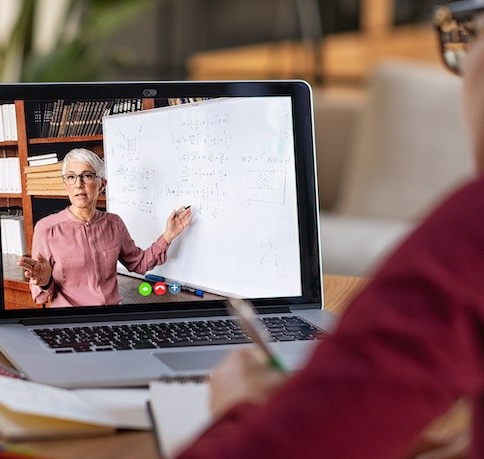People have been discussing distance learning for years. However, educators have now been forced to suddenly adopt remote instruction because of the ongoing pandemic. Faced with a future where they’ll have to often switch between classroom-based education and at-home learning, schools and universities have to prepare for a system that can support both. Although this is a problematic situation, I think it is also a great opportunity, especially when it comes to education and the evolution of pedagogy in general.
The only way to solve this is by digitizing all educational processes. However, while digital-native students adapt well to new tools, teachers have been thrown into a new environment with a whole new set of challenges. Now, the challenge for tech companies is bringing together the in-person and remote models in a way that instructors do not have to dramatically change the way they teach.
The Hybrid Classroom Strategy
The hybrid classroom is an educational strategy that combines online digital teaching with traditional classroom methods. It generally makes use of cloud-based software platforms that are always available and accessible. Using these platforms, teachers can create and present content. However, the goal is not for AV technology to replace in-person teaching entirely, but rather complement it and be capable of assisting during times of lockdown.
Collaboration and engagement are the next significant challenges. Eighty percent of communication is nonverbal, and without seeing students’ body language, teachers cannot tell if they are engaged. To achieve successful hybrid teaching and learning, these platforms must help teachers to interact with their students. These cloud-based platforms should mimic the traditional classrooms as much as possible.
For example, during a distance learning session, the technology should allow a student to ask a question using a “Raise Hand” type of feature where the teacher can decide to call on that student or not. The same idea for screen sharing or video calls. Also, the teacher should be able to divide a class of 30 students into virtual breakout discussion groups to collaborate on group projects regardless of where they may be. The teacher should be able to join, listen, and interact with each group in order to supervise each group’s assignment. In addition, we are at an age where technology can analyze and provide insights about a user’s behavior. For example, the software can now analyze the students clicks, pages scrolls, eye contact to the to the screen, and many other parameters to better assess this student’s engagement and progress.
Where Does EdTech Go from Here?
Everyone’s making guesses on what the right answer looks like for EdTech. My suggestion would be, solutions will keep evolving by adding new features and capabilities to bridge the gap between classrooms and distance learning, that is a fact we must embrace.
For many of us, this pandemic has been traumatic. However, this crisis offers us a huge opportunity to learn, innovate, and actualize. Technology can help the education system overcome the physical limitations posed by the pandemic by giving students live interaction. At the same time, it can give a tremendous boost to a new way we teach and educate students, and how we support the teachers who devote their lives to the future of our children.
The teaching English as a foreign language (TEFL) sector has also gone hybrid in the past year. The truth is, teaching English online has entered the mainstream in the past few years, but the past year has accelerated this trend.
Author bio: Craig Scott, Chief Technology Officer of ViewSonic.


